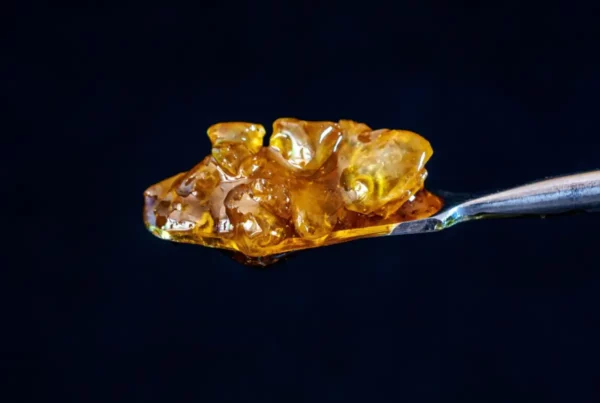Thanks to widespread legalization and an increased understanding of the benefits that cannabis consumption may bring, thousands of Americans are opening their minds to the prospect of trying marijuana products each month. Nonetheless, a distinct lack of knowledge remains in relation to the modern marketplace, such as how cannabis concentrates are extracted.
Legal marijuana consumption isn’t simply about rolling up a joint and getting stoned with your pals. Cannabis products are often seen as a way to potentially help reduce the symptoms of various physical and mental issues, which is why so many different products are available for such a diverse amount of people.
They are all manufactured from varying concentrates. Here are some of the methods you should know.

A non-solvent extraction, Kief is produced by using a screen to filter out the trichomes (crystalline structures on the surface) from the cannabis plant. For the best results, which produce a light-colored kief, it is important for a gentle touch to be used when working the cannabis through the screen. Otherwise, the final product will become severely compromised.
THC levels can reach a maximum level of 60%, which is why only small volumes are needed in the products.
Dry Sieve
In many ways, the dry sieve (sometimes called dry sift) is a variant of the kief extraction process. Dry sieve pushes the cannabis material through several screens until the trichome heads are the only material to remain. It may take a little more time, but is still one of the fastest methods of cannabis extraction available.
The final quality of the product will be influenced by the amount of plant matter and stalks left in the final product.
Hash
Another non-solvent extract is hash, which can be referred to as water hash, bubble hash, or full melt. Water hash is a process that uses a screen and water to separate the trichomes through submergence while keeping the coveted terpenoids and essential oils intact. The terms bubble hash and full melt refer to the resulting product, with full melt being considered the best quality.
This is one of the oldest extraction processes and can be dated back centuries, although other extraction methods can be used for a similar purpose.
Rosin
Rosin is another non-solvent extraction method, and it is one that has become very popular recently. Liquid terpenes are vaporized through a heat press, which utilizes high temperatures and firm pressures to produce the desired results. It is a quick and simple process that produces a non-solvent hash, which can be used in a variety of cannabis products.
In addition to being a quick process, it’s also very affordable. Given the increasing demands thanks to cannabis legalization, it’s no wonder the popularity has grown.
Butane Honey Oil
Often referred to simply as BHO, butane extraction is a method that has been popularized by the fragrance and food industries. Cannabis is added into a long column while butane is used to heat and extract the useable cannabis product. Depending on the heat levels (and other variables), a number of products can be created.
Shatter, budder, honeycomb, and crumble are just some of the variants. The names usually refer to the consistency of the final material.
CO2 Oil
Supercritical CO2 Oil is another process that creates a solvent solution. Carbon dioxide is a pure chemical substance and supercritical fluid, meaning it can be liquidized by heat without leaving any residue behind. Cannabis is placed into a high-pressure container before being pumped with supercritical CO2, where it eventually evaporates and dissolves into the cannabinoids.
This is a process commonly used in the food industries and has been for several decades. It is an extraction method that also produces low toxicity.
Rick Simpson Oil
Also known simply as RSO, this method of extraction produces a whole-plant cannabis oil that can be applied to the skin or swallowed as a consumable. This makes it a very convenient option for users thanks to how quickly it works. It is often the preferred choice of product for cancer patients and those suffering from epilepsy.
You may also know of this process under the names cannabis oil, hemp oil, Phoenix Tears but it is should not be confused with hemp seed oil.
The Final Word
With so many extraction methods, individuals can now embrace a wide range of cannabis products created from quality brands like Trendi, Leaf & Vine, and Medizin. They include oils, shatter, Live Resin, and more.
To learn more about the array of products on offer, contact us at Planet 13, the greatest dispensary Vegas has to offer.






